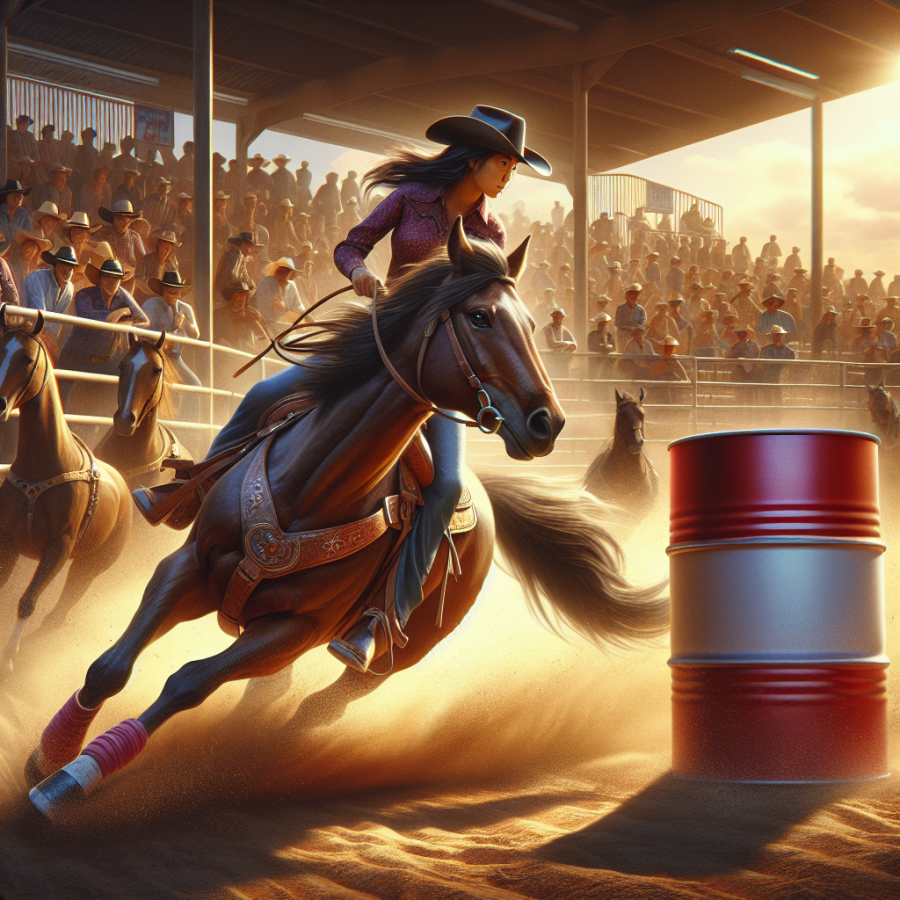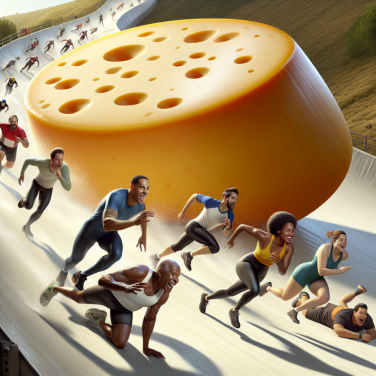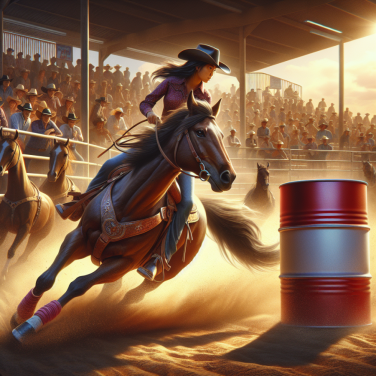The professional blog section focusing on barrel racing, a competitive horse-riding sport, will explore various aspects that demonstrate the rigorous combination of speed, skill, and intricate coordination between a rider and their horse. Here are the detailed expansions:
Understanding Barrel Racing: A Primer
Barrel racing is a dynamic rodeo event where horse and rider attempt to complete a cloverleaf pattern around preset barrels in the shortest possible time. Riders must have a deep understanding of horse behavior and a solid foundation in horseback riding to compete successfully.
The Role of Horse and Rider
The partnership between the horse and rider is pivotal in barrel racing. The rider, often referred to as the "barrel racer," must be in perfect sync with the horse, directing them with cues that are subtle yet clear. Horses are trained to navigate the pattern at high speeds while maintaining balance and proper footing, a testament to their agility and the rider's expertise.
Training Techniques for Top Performance
Training for barrel racing requires dedication and consistent practice. Horses are taught to respond to leg pressure, maintain a tight turn around the barrels, and sprint in between. Riders also work on their own physical fitness and mental preparedness to react swiftly and anticipate their horse's movements.
The Importance of Tack and Equipment
The right tack is crucial in barrel racing. Saddles are designed to allow maximum freedom of movement for both horse and rider, while also providing stability during tight turns. Bridles, bits, and reins should offer precise control without causing discomfort to the horse. Protective gear like boots and wraps help prevent injuries to the horse's legs during the rigorous activities.
Strategies for Winning Runs
Barrel racers employ various strategies to shave seconds off their times. This can include determining the optimal approach to each barrel, perfecting their starts and stops, and finding the right line that allows the horse to maintain speed without sacrificing agility.
Overcoming Common Challenges
Barrel racing is not without its challenges. One of the most significant is the mental and physical strain placed on the horses, making adequate rest and recovery essential. Additionally, riders must learn how to deal with competition nerves and how to help their horses stay calm and focused in different environments.
Advancements in Barrel Racing Techniques
As the sport evolves, so do the techniques used by top barrel racers. Innovations in training methods, improvements in tack and equipment, and a better understanding of equine health and sports medicine all contribute to improved performance and the well-being of the horses.
Read also:
Mastering Wiffleball: Tips and Techniques for Home Run Success
Crossing the Finish Line: Understanding the Speed Element in Barrel Racing
In barrel racing, crossing the finish line is not just about being fast; it’s about being strategically fast. This is where the element of speed comes into critical play. In this high-intensity sport, every millisecond counts, and understanding how to maximize speed while maintaining precision is what separates the good from the great.
To grapple with the speed element in barrel racing, riders must first grasp the importance of the approach to the barrels. A horse must be at an optimal speed to ensure they can enter and exit the turn with minimal time loss. This means that a rider must have an innate sense of timing to ask their horse for acceleration at the exact right moment. Riders practice various drills to hone their horse's response to speed cues and develop a seamless communication channel that seems invisible to onlookers.
Once the approach is mastered, turning becomes the next crucial aspect. In order to maintain speed, riders must perfect their and their horse's turning technique. The goal is to keep the turns as tight as possible without knocking over the barrel — a costly fault that adds penalty seconds to the total time. A horse that can 'sit' and pivot quickly around the barrel will save precious seconds. It's not only about the horse's agility but also about the rider's ability to maintain balance and momentum throughout the turn, which requires a deep understanding of equine biomechanics and physics.
Exiting the barrel is where riders can gain or lose significant time. The transition from the turn to the sprint must be smooth and swift. Training horses to power out of a turn determines how well they can regain their top speed to head to the next barrel. Riders work on drills that encourage horses to 'explode' out of a turn with energy and speed.
Finally, the home stretch towards the finish line is an all-out sprint. Riders must encourage their horses to give their all, finding that extra gear for the final push. It is during this dash that the bond between horse and rider is most apparent, as they work together to cover the ground as quickly as possible. Fitness, both of the rider and the horse, comes into play here. Only horses in top physical condition can sustain the highest speeds without faltering, while riders must remain aerodynamic and balanced to avoid slowing their mount down.
In the nuanced dance of barrel racing, speed intertwines with skill to create a mesmerizing sport where fractions of a second can mean the difference between winning and just another run.
Navigating Tight Turns: The Essence of Skill in Barrel Racing
Barrel racing stands unique among equestrian sports for its combination of raw speed, precision, and the deep connection required between horse and rider. As a testament to skill, few challenges are as strategic or as demanding as navigating the tight turns that the sport is iconic for. Competitors must guide their horses through a cloverleaf pattern around three barrels positioned in the triangle, a test that pushes the limits of both equine agility and rider acumen. Here we explore the techniques and strategies that riders employ to shave seconds off their time and keep the barrels standing – the essence of skill in this exhilarating sport.
Success in barrel racing hinges on the approach a rider takes towards each barrel. The goal is to cut as close to the barrels as possible without knocking them over, as this leads to time penalties. Riders must find the delicate balance between precision and speed - approaching the barrel at such an angle and pace that allows the horse to maintain as much of its momentum as possible without overshooting the turn.
Horse and rider must work as a cohesive unit. The equine athlete must be in peak physical condition, not only to sprint but also to have the muscular strength and flexibility to handle the tight turns at high speed. Training focuses on building a strong hindquarters and developing nimble footwork, so the horse can explode out of a turn without losing balance or rhythm.
Riders must also master the art of rate and cueing. 'Rating' refers to the process of preparing the horse to enter the turn, which involves slowing it down to the appropriate speed that will allow for a smooth, fast turn without drifting outwards. This is done through a combination of body position, rein pressure, and voice commands. Cueing is essential for communication; the horse needs to know exactly when to start the turn, when to accelerate and when to maneuver tightly around the barrel. Effective cueing comes down to the rider's timing, precision, and their intimate knowledge of their horse's capabilities and tendencies.
Moreover, the role of the rider's body cannot be overstated. Their posture and weight shifts during a run can dramatically affect the horse's balance and speed. Expert riders know how to lean into the turn in such a way as to encourage the horse's inside hind leg to step under its body, creating the pivot point for the turn. This movement not only helps with balance but also allows the horse to propel itself out of the turn with maximum force.




